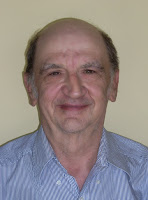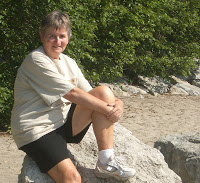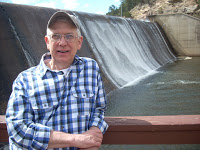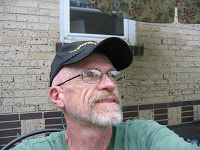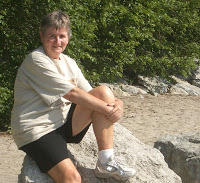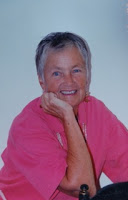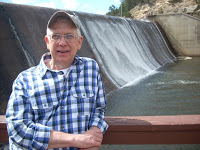You don’t want to go there: The Dominican Republic
Though it is true Dominican men are in general very appealing to look at, so are Sicilian and Italian men. One of the reasons I originally went to the Dominican Republic was to find out how third world people survive. I have since learned that, although the Dominican Republic is very poor, it is not the poorest of the third world nations. The first trip I took back in the early 1990’s was with my union, Local 371 of the NYC Human Resources Administration.
The second time I went there in 1995 on my own I met Leonardo Rojas. He introduced me to his family. His mother, father, aunts, uncles, sisters, brothers lived on a small dirt farm about 40 miles north of Juan Dolio which is on the south shore of the Dominican Republic. Juan Dolio is about 4 miles east of Boca Chica. I also observed a few other farms of various local families.
In our neighborhood in Wheat Ridge and Lakewood, many home-owners have tool sheds in their backyards. In the area of the Dominican Republic that I visited that was what one called a house, a casa. Given the occasional hurricane, and the year-round heat of the climate, I realized that is a more sensible alternative to making a home a larger structure that would eventually probably get blown away anyway is to live in a tool shed, a casa. On the Rojas farm there was no electricity or running water, but they did have a water pump with an underground spring beneath. And an out-house. There was a nice population of chickens, ducks, hogs, goats, cows and even a pony. There were about three casas.
Also, when I went the second time, I tried to relocate the hotel I originally stayed at, and a policeman who remembered it told me a hurricane had blown it away.
When Leonardo drove me about in the areas north of Juan Dolio, he told me that large stretches of land had no police which was why he could drive me about without his having a driver’s license. His family’s farm was located in one of these police-free zones.
The third time I went, I paired off with Edwin Velez at the Plaza Real Resort, again in Juan Dolio. I met his father who used to drive me around San Pedro de Macoris east of Juan Dolio especially when I needed to go shopping at Jumbo’s, the thoroughly modern Supermarket, located in that town. I was still also seeing Leonardo Rojas during my 3rd visit, and I once went with him when I rented a car to go to Jumbo’s. I told him he could do shopping for his family, and I observed what the favorite culinary treat for his family would be, and it was octopus tentacles. Can you imagine?
Also, when I was at Jumbo’s with Leonardo, I noticed a blond American doing shopping with a very beautiful Dominican man about 22 years old. I said to myself, “Gee, a gay American with enough money to move to the DR, and get himself a good-looking live-in escort, who probably was also his housekeeper”. The Dominican companion was very well dressed. At least for now I bet the blond man was happy.
The local economy for what it was, consisted of palatial casinos and hotels surrounded by luxuriant palm gardens. If and when you have to go to the bank, do not be surprised to see guards armed with automatic rifles. That was a little scary.
The Republica Dominicana is almost a paradise, a utopia, but “You don’t want to go there,” because the locals have become slighted jaded, and they have learned that the easiest way to realize cash is to con tourists. Mexico has the same problem.
About twenty-five years before my forays into the Republica Dominicana, I had a fixation on Italian men. I kept my eyes open and noticed a lot of beautiful Italian men. On my trip to Europe, I visited Rome. The policemen there are called sbirri. Men just do not get any better-looking. The sbirri were tall, dark-skinned, and mysterious in their long-caped black uniforms. My trip to Europe was mostly sponsored by Queens College, my undergraduate alma mater.
When I returned to Queens College, I took an Italian language course, and the instructor was on loan from Rome or Naples. Signore Genovese. He was amazingly beautiful and wore custom-tailored $2,000 silk suits and perfect expensive Italian shoes. Even the heterosexual men in his class took notice. The girls all fell in love with him. I fell in love with him, sort of. His skin was a dark olive hue, and I remember that, when I was looking at him, I said to myself that he was a beautiful person of color, that is to say, the puritanical racist in me said he was a person of color. We all have these irrational fears and prejudices that have been instilled in us. Of course, scientifically he was a Caucasian.
The liberal in me now says I have just engaged in a sort of evaluating people by their looks and their race, which is a sort of racial stereotyping. I should not want to go there. Still I saw what I saw.
© 30 April 2018
About the Author
I was born in 1944, I lived most of my life in New York City, Queens County. I still commute there. I worked for many years as a Caseworker for New York City Human Resources Administration, dealing with mentally impaired clients, then as a social work Supervisor dealing with homeless PWA’s. I have an apartment in Wheat Ridge, CO. I retired in 2002. I have a few interesting stories to tell. My boyfriend Kevin lives in New York City. I graduated Queens College, CUNY, in 1967.
